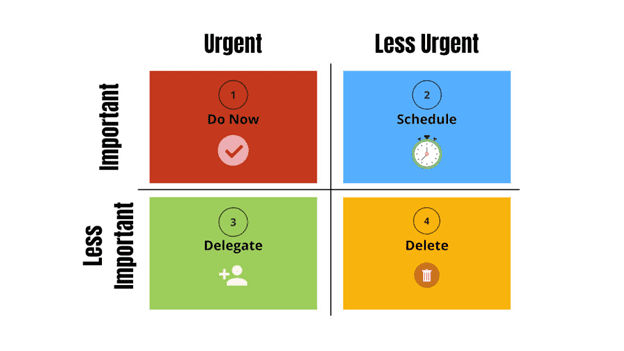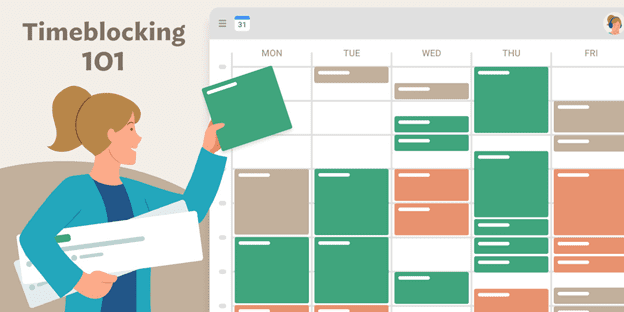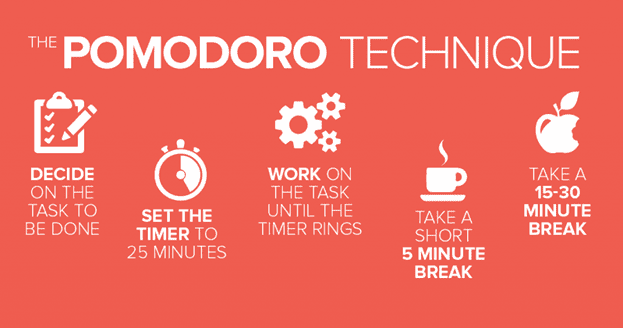Time Management for Small Business Owners: Unlocking the Potential of Your Schedule

Time management is an essential aspect of running a successful home-based or small business. As a small business owner, managing your time effectively can lead to increased productivity, better decision-making, and ultimately, business growth.
Something I want to emphasize in this article is that busy doesn’t not necessarily mean productive, and indeed, busy isn’t always good.
Being busy has become the normal response when asked, “how are you?” and studies show this response of “busy” has increased dramatically over the last 50 years. Adam Waytz stated it well in his article “Beware a Culture of Busyness”, Harvard Business Review, by saying,
“Busyness has become a status symbol. People also consider those who exert high effort to be ‘morally admirable,’ regardless of their output.”
Adam Waytz
Busyness by itself doesn’t necessarily show productivity, and actually being busy can give us a false impression that we are productive when in reality we are spinning our tires in the mud of distraction.
This article will explore the dynamics of time management, identify effective strategies, examine potential distractions, and provide expert insights from authoritative sources, such as the Harvard Business Review.
We will discuss the importance of understanding the difference between busyness and business, as well as the health risks associated with working long hours.
The Dynamics of Time Management
Prioritization
Effective time management begins with prioritizing tasks based on their importance and urgency. This process can be facilitated by utilizing the Eisenhower Matrix, which categorizes tasks into four quadrants:

- Important and Urgent: These tasks demand immediate attention and should be tackled first. Examples include crisis management, urgent deadlines, and pressing client requests.
- Important but Not Urgent: Tasks that contribute significantly to long-term goals fall into this category. They should be scheduled and completed once urgent tasks are addressed. Examples include strategic planning, networking, and professional development.
- Urgent but Not Important: These tasks require prompt action but have minimal impact on long-term goals. Whenever possible, delegate these tasks to employees or colleagues. Examples include responding to non-urgent emails, attending to administrative tasks, and managing social media accounts.
- Not Important and Not Urgent: Tasks in this category should be minimized or eliminated altogether, as they consume valuable time without contributing to business growth. Examples include excessive social media browsing, irrelevant meetings, and busywork.
Delegation
Small business owners often grapple with myriad responsibilities. Learning to delegate tasks effectively is essential for maximizing time and resources. Consider the following steps to delegate tasks efficiently:
- Identify tasks that can be delegated: Determine which tasks can be completed by team members or outsourced to external service providers.
- Select the right person: Match tasks with team members based on their skills, experience, and workload.
- Provide clear instructions: Ensure that employees understand the task requirements, desired outcomes, and deadlines.
- Monitor progress and provide feedback: Regularly check in with team members, offer support and guidance when necessary, and provide constructive feedback to facilitate growth.
Work-Life Balance
Striking a healthy work-life balance is integral to sustaining productivity, fostering creativity, and preventing burnout. To achieve a balanced lifestyle, consider implementing the following strategies:
- Set boundaries: Clearly define your working hours and communicate them to your team and family. Establishing boundaries will help prevent work-related encroachments on personal time.
- Schedule downtime: Plan regular breaks, vacations, and leisure activities to recharge and maintain mental well-being.
- Cultivate hobbies and interests outside of work: Pursuing non-work-related activities can help alleviate stress, boost overall satisfaction, and foster a well-rounded lifestyle.
- Maintain physical health: Incorporate exercise, a balanced diet, and sufficient sleep into your daily routine to support optimal performance and well-being.
By understanding and addressing the dynamics of time management, small business owners can optimize their schedules, improve productivity, and pave the way for business growth.
Another aspect of time management is decision making. We addressed this above in identifying priorities using the Eisenhower Matrix and identifying ways to delegate.
Learn what Aaron Yamamoto has to say about Better Decision Making and apply it to your time management skills.
Effective Time Management Strategies
Time Blocking

Time blocking is a strategy that involves dedicating specific blocks of time to individual tasks and adhering to this schedule as closely as possible.
This method can help minimize distractions and enhance focus. To implement time blocking effectively, follow these steps
List your tasks
Begin by listing all the tasks you need to complete, including both work-related and personal activities.
- Estimate time required: Determine how much time you expect each task will take to complete.
- Schedule tasks: Assign a specific block of time to each task in your calendar, ensuring you allocate sufficient time for each activity. Be realistic about the time needed for each task to avoid over-scheduling.
- Limit distractions: During each time block, minimize interruptions by silencing your phone, closing unnecessary browser tabs, and informing colleagues or family members of your schedule.
- Evaluate and adjust: Periodically review your time blocking schedule to identify areas for improvement and make necessary adjustments.
The Pomodoro Technique

Developed by Francesco Cirillo, the Pomodoro Technique is a time management method that involves breaking work into 25-minute intervals, called “Pomodoros,” followed by a 5-minute break.
After completing four Pomodoros, take a longer break of 15-30 minutes. This technique promotes sustained focus and prevents burnout. To use the Pomodoro Technique effectively, follow these steps:
Choose a task: Select a specific task or project to work on during the Pomodoro.
Set a timer: Use a timer to track the 25-minute interval, and commit to focusing solely on the task at hand.
Take a break: After the timer goes off, take a 5-minute break to rest and recharge before starting the next Pomodoro.
Repeat the process: Continue working in 25-minute intervals, followed by short breaks. After completing four Pomodoros, take a longer break to recuperate.
SMART Goals
Setting Specific, Measurable, Achievable, Relevant, and Time-bound (SMART) goals can improve focus, motivation, and productivity.
By clearly defining objectives and establishing a plan for achieving them, you can work more efficiently and effectively. To set SMART goals, consider the following:
Specific: Define clear and concise goals that outline exactly what you want to accomplish. Avoid vague or ambiguous language.
Measurable: Establish criteria for measuring progress and success. This may involve setting key performance indicators (KPIs) or milestones to track your progress.
Achievable: Ensure that your goals are realistic and attainable within the given timeframe and resources. Setting overly ambitious goals can lead to frustration and demotivation.
Relevant: Align your goals with your broader business objectives and ensure they contribute to your overall vision and mission.
Time-bound: Assign deadlines to your goals to encourage accountability and maintain a sense of urgency.
By implementing these effective time management strategies, small business owners can enhance productivity, maintain focus, and work more efficiently toward achieving their business objectives.
Apart from strategies that can help you with time management, using the right tools in your work can also help keep control of the time-monster.
Jason Carlile reviews tools for the home business/small business at his site, the Carlile Business Review where he goes into detail about open source software and project management tools perfect for managing time.
Click here for the Carlile Business Review’s article on Open Source and Project Management Tools.
Busyness vs. Business: Understanding the Difference

Busyness
Busyness is the state of being constantly engaged with tasks, regardless of their importance or impact on the business. In today’s fast-paced world, busyness has become a status symbol, with many individuals equating constant activity with success and productivity.
Busyness can create a false sense of accomplishment, often distracting from genuinely meaningful progress.
In his Harvard Business Review article, “Why You Should Stop Trying to Be Busy,” organizational psychologist Adam Waytz explains that busyness may lead to a narrow focus on low-impact tasks, reducing the capacity for creative thinking and problem-solving.
- Illusion of Productivity: Being busy may create the impression of productivity, but it does not guarantee meaningful results. A packed schedule can lead to multitasking, which, according to research, can reduce overall productivity by as much as 40%.
- Decision Fatigue: Constant busyness can lead to decision fatigue, resulting in reduced mental energy, impaired decision-making, and a higher likelihood of making poor choices.
- Reduced Creativity: An overly busy schedule may limit opportunities for reflection, strategic thinking, and creative problem-solving – all essential elements for business growth and innovation.
Business
In contrast, focusing on business means directing your efforts toward tasks and activities that genuinely contribute to the growth and success of your company.
This approach involves setting and achieving SMART goals, prioritizing high-impact tasks, and delegating responsibilities where appropriate.
By concentrating on business rather than busyness, you can optimize your time and energy for tasks that yield tangible results.
- Goal-Setting: Establish Specific, Measurable, Achievable, Relevant, and Time-bound (SMART) goals to guide your efforts and maintain focus on business objectives.
- Prioritization: Identify and prioritize high-impact tasks that align with your business goals, and allocate your time and resources accordingly. The Eisenhower Matrix, as mentioned earlier, can be a valuable tool for prioritization.
- Delegation: Delegate low-impact tasks to employees or external service providers to free up time for strategic decision-making and activities that drive business growth.
By recognizing the difference between busyness and business, small business owners can shift their focus to activities that contribute meaningfully to their company’s success, ultimately leading to more efficient use of time and resources.
By referring to expert insights, such as those provided by Adam Waytz in his HBR article, entrepreneurs can adopt strategies that prioritize genuine productivity over the mere illusion of busyness.
Health Risks of Working Long Hours: Insights from the WHO

Increased Risk of Cardiovascular Disease
According to a study conducted by the World Health Organization (WHO) and the International Labor Organization (ILO), working 55 or more hours per week increases the risk of developing ischemic heart disease by 17% and stroke by 35%, compared to those working 35-40 hours per week. These findings emphasize the importance of maintaining a healthy work-life balance and limiting excessive working hours to reduce the risk of cardiovascular disease.
Global Impact
The WHO and ILO study found that in 2016, 745,000 people worldwide died from stroke and ischemic heart disease due to working long hours.
This figure represents a 29% increase in deaths from these causes since 2000, highlighting the growing concern around the health implications of excessive work hours. The study estimates that 8.9% of the global population works more than 55 hours per week, increasing their risk for these health issues.
Affected Populations
The study revealed that long working hours disproportionately impact middle-aged and older workers. Most deaths occurred among individuals aged 60-79 who had worked long hours between the ages of 45 and 74.
The research found that men were more likely than women to work extended hours, with 72% of the total deaths occurring among male workers.
The study also identified regional disparities, with the Western Pacific and Southeast Asia regions experiencing the highest rates of death due to long working hours.
Mental Health Impact
Apart from cardiovascular diseases, working long hours can also negatively affect mental health.
A study published in the Journal of Occupational and Environmental Medicine found that employees working more than 52 hours per week were at a higher risk of developing depression and anxiety compared to those working 35-40 hours per week.
These mental health implications further underscore the need to address excessive working hours in the interest of worker well-being.
By acknowledging the health risks associated with working long hours, small business owners can implement measures to protect themselves and their employees from these adverse outcomes.
Establishing a culture that prioritizes work-life balance and reasonable working hours can contribute to a healthier, more productive work environment.
Potential Distractions and How to Overcome Them

Technology
In the digital age, technology can be both a productivity booster and a source of distraction. To minimize technological distractions, consider the following strategies:
Turn off notifications: Silence or disable notifications on your devices during work hours to prevent interruptions and maintain focus on the task at hand.
Limit social media use: Allocate specific time slots for social media browsing, and avoid accessing these platforms during work hours. Utilize website blockers or apps to help you stay on track.
Establish designated times for checking emails: Schedule specific times throughout the day for reading and responding to emails, rather than constantly monitoring your inbox.
Interruptions
Disruptions from colleagues, employees, or family members can hinder productivity and focus. To minimize these interruptions, implement the following measures:
Establish boundaries: Clearly communicate your work schedule and expectations to those around you, and ask for their cooperation in minimizing interruptions.
Create a dedicated workspace: Set up a designated area for work, whether at home or in an office, to signal to others that you are in a work mode and should not be disturbed.
Use visual cues: Display a “Do Not Disturb” sign or wear headphones to signal that you are busy and should not be interrupted.
Procrastination
Procrastination can be a significant obstacle to effective time management. Overcome this challenge by employing the following tactics
Break tasks into smaller, more manageable pieces: Divide large projects into smaller tasks to make them less overwhelming and easier to tackle.
Establish deadlines: Set deadlines for each task to create a sense of urgency and encourage timely completion.
Use the “2-Minute Rule”: If a task takes less than two minutes to complete, do it immediately. This rule, popularized by productivity expert David Allen, helps to prevent small tasks from piling up and becoming overwhelming.
Reward yourself: Establish a reward system for completing tasks on time, such as taking a short break or enjoying a small treat, to motivate yourself and reinforce positive behavior.
By identifying potential distractions and implementing strategies to overcome them, small business owners can maintain focus, increase productivity, and optimize their time management skills.
Final Thoughts
Effective time management is crucial for the success of home-based and small businesses. By understanding the dynamics of time management, including prioritization, delegation, and work-life balance, entrepreneurs can optimize their productivity.
Implementing proven time management strategies such as time blocking, the Pomodoro Technique, and SMART goal-setting can help maintain focus and drive progress.
Recognizing the difference between busyness and business is essential for ensuring meaningful results, while being aware of the health risks associated with long working hours underscores the importance of work-life balance.
Overcoming potential distractions such as technology, interruptions, and procrastination further contributes to efficient time management. By incorporating these insights and practices, small business owners can effectively manage their time, enhance productivity, and ultimately achieve their business objectives.
Sources:
- Mankins, M. C. (2017). “HBR’s 10 Must Reads on Time Management.” Harvard Business Review.
- Vanderkam, L. (2016). “Off the Clock: Feel Less Busy While Getting More Done.” Harvard Business Review.
- World Health Organization (2021). “Long working hours increasing deaths from heart disease and stroke: WHO, ILO”
Bio:

Jason, is a coffee lover, amateur audiophile, and small business entrepreneur who is interested in the future of technology and longevity sciences. He holds a Master of Liberal Arts from Harvard University in Management and has experience managing large teams and assets worth over $100 million.
He is also dedicated to volunteer work and advocacy, having served as a Director and Secretary of the Board for the Greenwood Association of Apartment Owners and collaborated with the Harvard Graduate Council’s External Advocacy Committee while a graduate student.
He hopes to use his expertise in business to share insights at his site, the Carlile Business Review, and collaborate with other experts in their respective fields.






